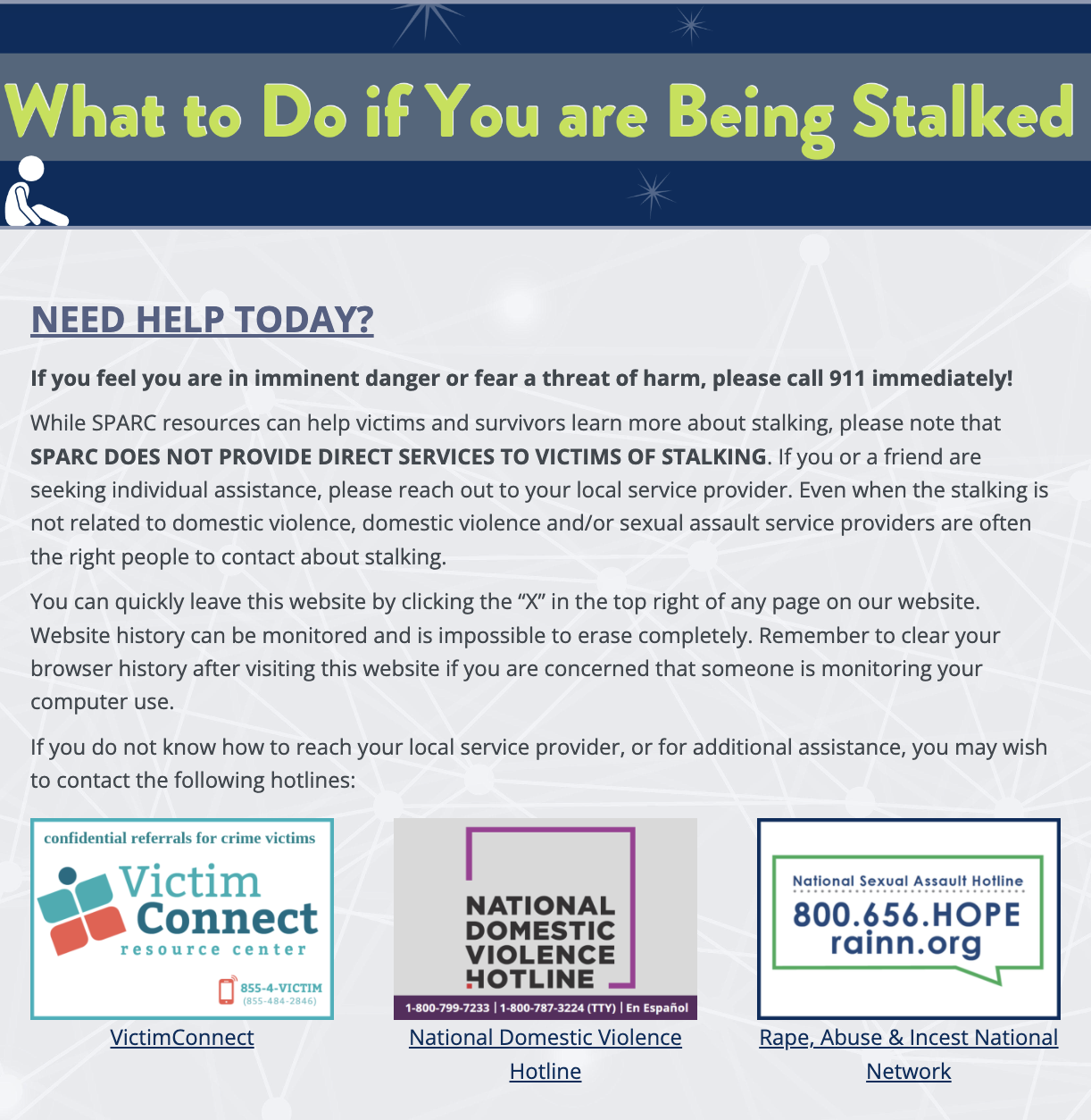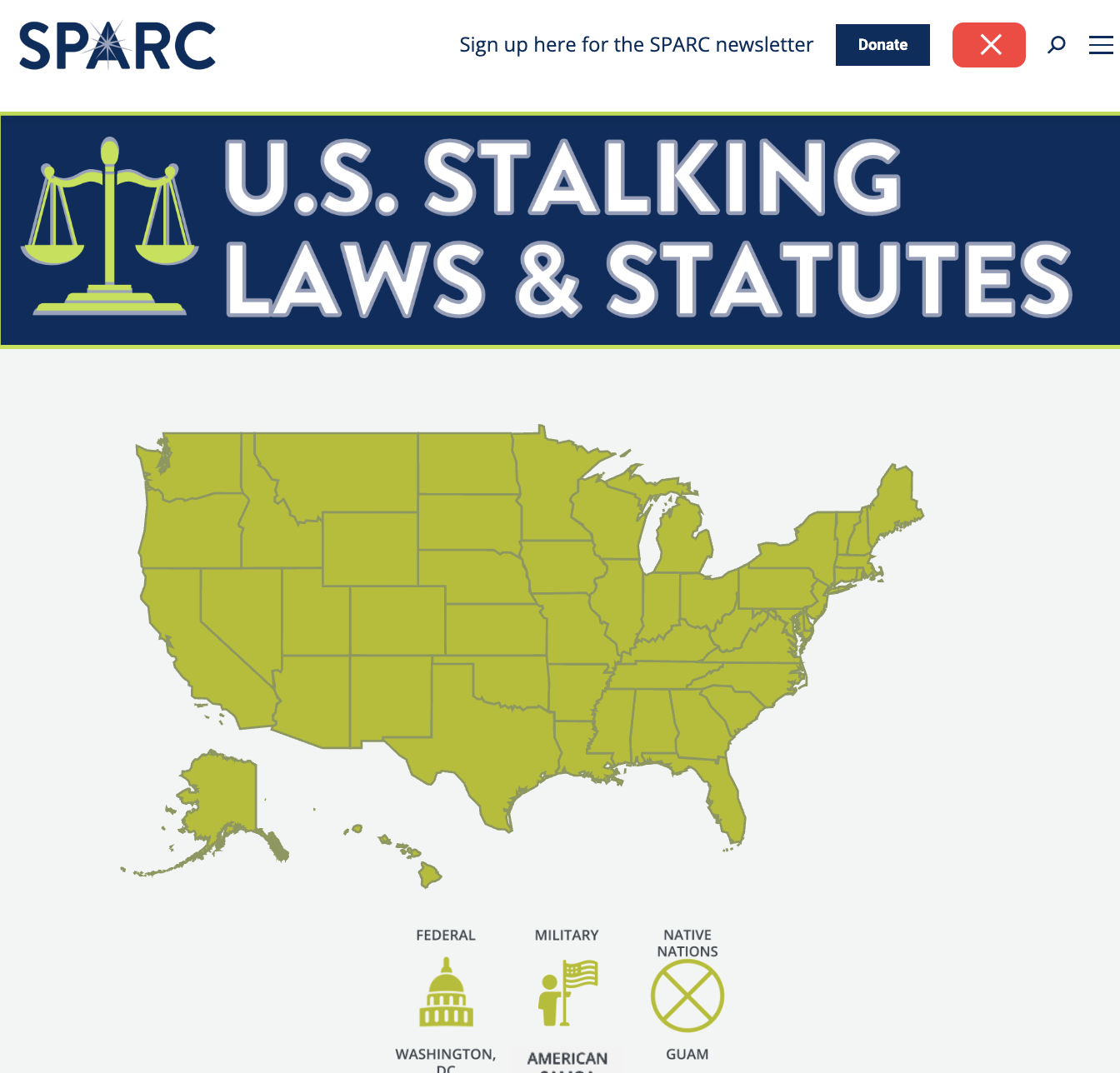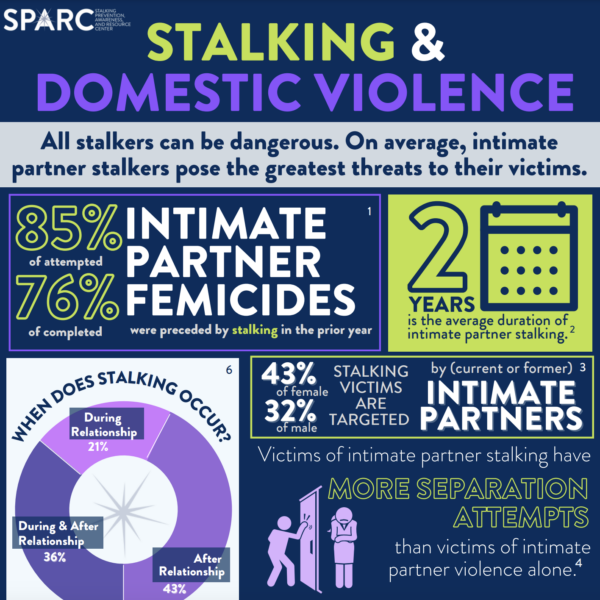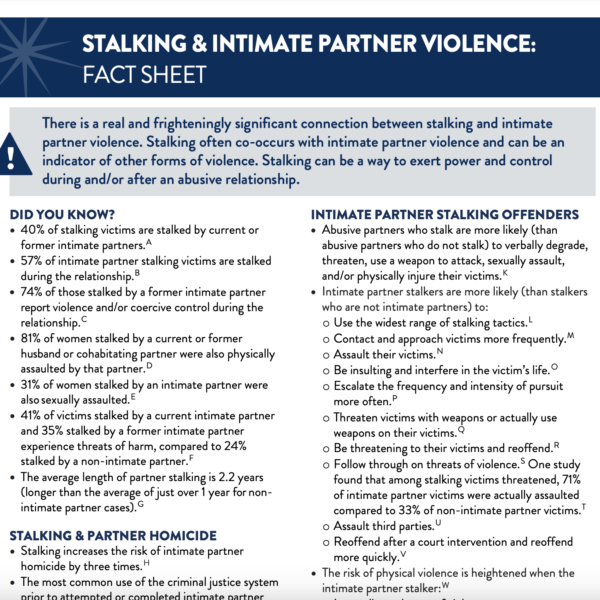Stalking and Domestic Violence
What is Stalking?
From a behavioral perspective, stalking is defined as "a pattern of behavior directed at a specific person that would cause a reasonable person to feel fear for the person's safety or the safety of others; or suffer substantial emotional distress." While criminal definitions vary, establishing a "pattern of behavior" refers to at least two instances of stalking.
According to the SLII model, there are four common characteristics of stalking: Surveillance, Life Invasion, Intimidation, and Interference. 78% of people engaging in stalking behaviors typically use more than one means of approach to stalk their victims (Stalking, Prevention, Awareness, and Resource Center).
Surveillance refers to behaviors that society is likely to identify as stalking. For instance, waiting for a victim, showing up at a victim's residence, using tracking software against a victim, and proxy stalking, or using a third party to keep tabs on a victim.
When a person using stalking behaviors inserts themselves into the victim's private life, that is known as Life Invasion. This refers to unwanted contact at home or work, harassing a victim's friends or family members, repeated phone calls, property invasion, or public humiliation.
Threats, property damage, threats to harm others or actually harming others, threats to call (or actually calling) immigration authorities, and symbolic acts of violence are all examples of Intimidation. Symbolic violence refers to an act that has a deeper meaning to the victim but may not appear threatening to bystanders.
As the name suggests, Interference refers to any behavior that complicates the victim's life such as ruining their finances, sabotaging their work, destroying the victim's reputation, interfering with custody of children, preventing the victim from leaving, attacking family, friends, or pets and physical or sexual assault.
Why Do People Stalk?
There is not one main reason why a person may begin to stalk a victim. However, some reasons are:
-
-
- To seek affection
- Power and control
- They were rejected by the victim
- They are obsessed with the victim
- They are planning to commit a crime
- Because they can
-
Did you know?
Women are more likely to experience stalking than men but when a man does experience stalking, the majority of the time, he is being stalked by another male. This is true regardless of the victim's or offender's sexual orientation.

“Going to work, attending my kids’ activities, going out for the evening…these things seem routine. For me they’re terrifying because I never know what he will do or when he will show up.”

How Stalking Intersects with Domestic Violence
Too often, stalking is seen as something separate and apart from domestic violence. It’s usually not identified until after a person has left their abusive partner. However, if a partner is monitoring a victim’s phone, giving them unwanted gifts, tracking their location, or refusing to let them leave the house, then that is stalking. A victim does not have to leave their abusive partner for these actions to be considered stalking. In fact, a victim can be stalked before, during, or after a relationship ends.
Why does this matter?
According to the Stalking, Prevention, Awareness, and Resource Center, recognizing these behaviors as stalking matters because intimate partner stalkers are the most dangerous. They’re more likely to physically approach their victim, they are typically more threatening because there is a history between the pair, they tend to escalate their behaviors very quickly, and they are more likely to use weapons.
Stalking and Intimate Partner Homicide
As stated above, the most dangerous stalking situations are the ones where there has been a romantic or sexual relationship prior to the stalking. In 85% of attempted intimate partner homicides and 76% of completed homicides, there had been at least one episode of stalking within a year prior to the murder or attempt.
Unfortunately, if a person is experiencing both domestic violence and stalking, their risk for intimate partner homicide is three times greater than a person experiencing stalking without domestic violence. In fact, stalking is the number 8 risk factor for intimate partner homicide.
*All stats provided by the Stalking, Prevention, Awareness, and Resource Center

The Stalking & Harassment Assessment & Risk Profile (SHARP)
SHARP is a web-based tool that is designed to assess stalking. This tool provides "a situational risk profile that consists of 14 factors associated with a wide variety of harms including physical or sexual attack, harm to others, ongoing and escalating stalking and harassment, and life sabotage" (Stalking, Prevention, Awareness, and Resource Center). SHARP is free to use and provides information about stalking risks and offers safety suggestions. It is NOT intended to replace reaching out to a provider for assistance.
Why Context Matters
When a person is being stalked, there are sometimes symbolic acts of violence that may not register as a threat to anyone other than the victim. For instance, Jennifer Landhuis, the director of Stalking, Prevention, Awareness, and Resource Center, recalls a story of a victim who found a cup of coffee in her car. To outsiders, it appeared that someone had just done a random act of kindness.
However, to the victim it represented an imminent threat. Earlier that year, she had moved across the country to get away from her former spouse who had begun stalking her. She created a new life and began to feel safer. When she found this cup of coffee in her car, it was from her new favorite coffee shop, made in her current favorite manner, and had the pet name her former spouse called her written on the side. To outsiders a simple coffee cup posed no threat, but to the victim it meant one thing: he's here.

Resources
There is a wealth of information on the Stalking, Prevention, Awareness, and Resource Center's website that is available in both English and Spanish.








